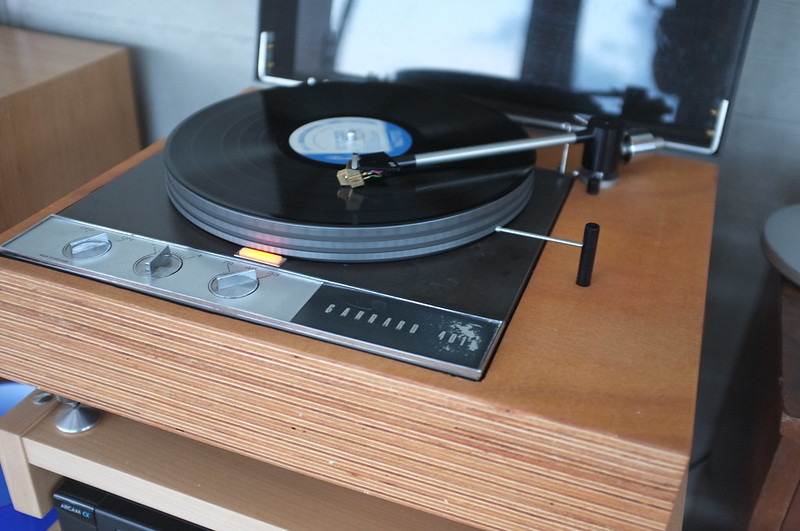Apologies for the thread diversion but what size sorbothane spheres did you end up using, Mike?
I purchased both sets from Peak HiFi
https://www.peakhifi.co.uk/cgi-bin/ecom.cgi?Command=ShowProduct&db_pid=181
Regards
Mike Kelshaw
Apologies for the thread diversion but what size sorbothane spheres did you end up using, Mike?
I purchased both sets from Peak HiFi
https://www.peakhifi.co.uk/cgi-bin/ecom.cgi?Command=ShowProduct&db_pid=181
Regards
Mike Kelshaw

Many years ago when I was still working and travelling all over the place I struck up a friendship with Terry O Sullivan and often called in to his workshops in Marlborough and later at the Piggeries in Lambourn. His sidekick was Nigel Pearson and between them they lived and breathed for Garrard / Loricraft. Their enthusiasm and knowledge had no limit and even if you struck up a conversation, on say the reproduction cycle of a dung beetle, they would divert the conversation back to Turntables within a minute. Turntables were totally in their blood and it was always quality of product before the making of money.
They spent goodness knows how many man hours experimenting on the making of the plinth and tried every material they could think of before settling on the standard plinth of solid wood / 20mm plywood top plate supported by 4 standard size squash balls.
I bought a second hand 401 for the princely sum of £40 and did a deal with Terry, he did a full service on the 401 and fitted it into one of his plinths.
The increase in sound quality was enormous and from that time I have been hooked on the 401 / Loricraft plinth / Naim Aro / Dynavector cartridges and Loricraft PSUs.
I once had a chat with Nigel and he reckoned that sorbothane was the only thing that came near to squash balls and I may well buy some of the ones that you have suggested as my squash balls are somewhat distorted.
One of my regrets since retiring is that I have lost contact with Terry who has now himself retired and goodness knows what has happened to Nigel. I must have visited hundreds of small firms in my time as a Purchasing Manager but Nigel and Terry certainly came out on top for enthusiasm. The industry and the UK needs more like them.
Regards
Mick
...I was lucky to buy a Martin Bastin ply plinth SH on Ebay at a reasonable price.
The increase in sound quality was enormous and from that time I have been hooked on the 401 / Loricraft plinth / Naim Aro / Dynavector cartridges and Loricraft PSUs.
Do not put the armrest in the position indicated by the Aro arm board drawing for an LP12. Move it nearer to the platter, in a line directly "below" the bearing pillar. This eliminates the gap between the rest and the platter and means if you drop the arm the stylus does not hit the metal chassis (RIP one AT33PTG).
I hope you are sitting down for this next bit. I've heard that Terry now uses a Technics 1200G as his main turntable! Quite a few others are making a similar change. Apparently it has allot of the 301/401 attributes.
I think it did. Looks really good.Did it ship from Moldova?
Many years ago when I was still working and travelling all over the place I struck up a friendship with Terry O Sullivan and often called in to his workshops in Marlborough and later at the Piggeries in Lambourn. His sidekick was Nigel Pearson and between them they lived and breathed for Garrard / Loricraft.--------
They spent goodness knows how many man hours experimenting on the making of the plinth and tried every material they could think of before settling on the standard plinth of solid wood / 20mm plywood top plate supported by 4 standard size squash balls.
I bought a second hand 401 for the princely sum of £40 and did a deal with Terry, he did a full service on the 401 and fitted it into one of his plinths.------
Regards Mick
I’m using a Long Dog Audio regenerator psu. As well as giving better speed stability I found it to have all round sonic benefits. The background noise is now much lower, the bass is better controlled, high frequencies are cleaner and more extended and dynamics are much improved. Well used records sound better too as surface noise seems to be less intrusive than before.I'd be interested to hear peoples experiences with PSU's for the 401.
I'd be interested to hear peoples experiences with PSU's for the 401.
What do the modern PSUs actually do? For a long while the suggestion from Loricraft and others was to just use a ‘dim-bulb tester’, i.e. wire an incandescent lightbulb in series to drop the voltage down by some percentage. This means you can get away with less eddy current brake, which is a major noise source in Garrards and 124s, but you also lose torque so very much a ‘tune by ear’ thing. I played about with it at length with the TD124 and eventually came to the conclusion I valued the torque/drive/punch over noise-floor, so I’m running without.
PS I may try again at some point as I built a new dim-bulb tester as part of my TL12 Plus restoration.
II've also got a loaned Lenco controller...
Is that Nigel's speed controller from Lenco Heaven? I have the PCB waiting for me to start yet another project...
